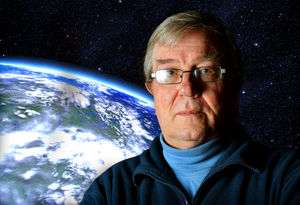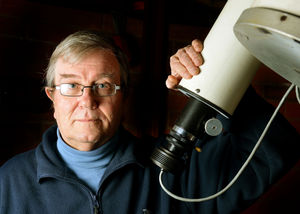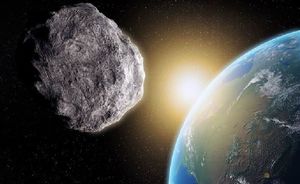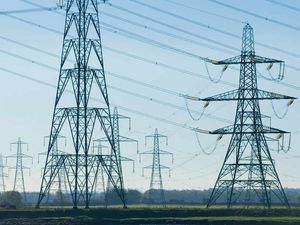The end of the world . . . but not quite yet
The end of civilisation is coming – but don’t worry, it’s not the end of the world for us.

Scientist Jay Tate has predicted a date when Earth will end. But the date, March 16, 2880, is too far ahead to bother us.
Jay and his wife Anne run the Spaceguard Centre in Powys.
The couple who have run the observatory for 16 years are claiming that is the exact date the world will end, and are monitoring asteroids and comets on a daily basis.
The observatory in Knighton is the country’s only monitoring facility of its kind, and they are tasked with giving authorities time to defend against a potential fatal asteroid hitting earth.

Mr Tate, a former Army major, has been tracking more than 50 space rocks that are on the move.
He says Nasa has highlighted around 670 objects that are causing concern.
He said: “The year 2880 should be rather fun. It will come very close.
“At two kilometres across, it’s big enough for a global event, a bit small for a truly massive shock.
“Does it worry me? Does being hit by a bus bother you? They are both logical risks in life.”
The Tate’s have dedicated the last 16 years at the centre to studying objects and the work they do is essential, so much so that the centre has a burglar alarm linked to the solar system.
Mr Tate added: “In the long term, the work is essential. We are not likely to get hit by an asteroid in the next few years, but, in the long term, it will happen.
“It is inevitable. You don’t have to have the brains of an archbishop to realise that. Some have come as close as our satellites – we’ve had a few minor hits.
“But we can stop it hitting. We can turn a direct hit into a near-miss. The whole name of the game is to get the time to work on an asteroid’s properties and its measurements.”
The centre in Radnorshire used to be known as the Powys Observatory. Mr Tate was offered the facility 16 years ago, and work is currently underway on a £97,000 dome that will enhance tracking facilities.
But despite their work being important, the government has shown little interest and the Tate’s have to rely on donations to keep going.
Mr Tate believes because you cannot see it, the government will not back it.
He added: “We are looking at the only major, nailed-on hazard that can finish off our species at a stroke. But you can’t see it on telly, therefore it does not exist.
“The Government has compiled a national register of risk. It includes pandemics, terrorist activity and flooding, but asteroids and comets are not in it.
“No one else was doing this, and I was told not to. I tried to persuade them to do something. When you’re banging your head against a brick wall for 20 years, you eventually think, ‘Sod it, we’ll get on with it ourselves’. ”
Bus-sized asteroid in 21,000 mph near-miss

Destruction may be hundreds of years away, but the dangers coming from space are taken very seriously by experts.
A newly-found bus-sized asteroid came ‘close’ to Earth just on Thursday – at speeds of more than 21,000mph.
Named 2017 YZ4, the asteroid was only spotted on Christmas Day, which means very little could have been done to protect Earth if it were to hit.
The asteroid passed between the Earth and moon at a distance of just 139,433 miles, which is close enough to be considered a ‘near miss’ by astronomers.
The potentially hazardous asteroid, which is 22.6 to 49 feet in diameter skimmed past Earth at 4.56pm GMT on Thursday.
Nasa describes asteroids as ‘hazardous’ if they come within the 4,600,000 mile threshold of proximity to our planet. Anything that flies closer than six million miles of our planet is a near Earth asteroid and could cause severe damage were it ever to crash into Earth.
In February 2013 a 62ft meteor exploded in the skies above Chelyabinsk in Russia. The energy, which was equivalent to 500,000 tonnes of TNT, and injured more than 1,000 people.
The asteroid was first spotted at Mount Lemmon Survey Observatory in Arizona and was the 52nd to pass between Earth and the moon this year.





